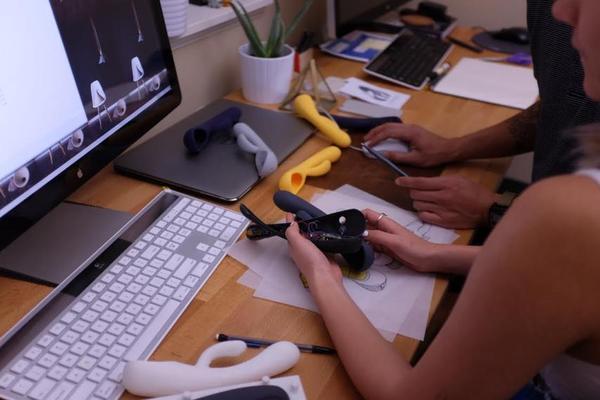A startup company called Lioness brings the health monitor into the bedroom with a vibrator that records women's sexual arousal and orgasms. They hope that women will use the information collected the same way one might use Fitbit sleep data: to figure out what works and tweak their routine. Only the reward here is not a good night's rest.
Other sex toys on the market are jumping the net. A $250 "arousal aid" called Fiera caused a stir at the Consumer Electronics Show this year. And for long-distance romances, there are attempts to link couples through the internet of things and their underwear. But what Lioness hopes to do is different: empower women to learn about their own sexuality and communicate it to their partners.
Lioness is the brainchild of Liz Klinger, a Dartmouth College graduate who studied human sexuality. After working at investment bank Credit Suisse, Klinger spent time hosting Passion Parties, a company that uses the old "Tupperware party" model to sell sex toys. She says that the most important thing she learned from clients was the importance of communication in sexuality and that most women have questions about sex that are not necessarily answered online. Lioness hopes to solve both problems by giving women real insight into their sexual responses, while simultaneously giving them something concrete to talk about with their partners regarding their preferences. “Over time, as they use the product, they can learn more about what they like,” says Klinger.
Ergonomic studies on how most women actually hold a vibrator showed that most sex toys are designed with the handle upside down // PHOTO: LIONESS.IO

Lioness launched the product with IndieGogo—its Kickstarter competitor eschews sex toys—and easily exceeded its funding goal with a month left in its campaign. With offices at Skydeck, a start-up incubator at the University of California, Berkeley, the team took on the project as an engineering challenge, and that meant doing a lot of testing. "There are so many bodies and preferences, and there are so many products that don't take that into account," says Klinger.
Some of the results surprised Klinger and her team. For example, ergonomic studies of how most women actually hold a vibrator showed that most sex toys are designed with the handle upside down. "There really aren't any handheld studies for vibrators like there are for computer mice," says Klinger. Beta tests showed that the twisting motion used by many sex toys was not something any woman wanted. Another surprise about the Lioness vibrator is the size. "Bigger isn't always better," says Klinger. “You give this to people and they're like, 'Really? Is it this size?'”
Lioness also used the same techniques that have improved the iPhone to make the ergonomic vibrator affordable. That means easily distinguishable, tactile buttons that you can feel without seeing, a rechargeable battery, and a visible power meter.
Vibrators have been around since the late 1800s and have used everything from steam to a crank. They were originally designed to cure "hysteria," the mysterious ailment unique to women that (thankfully) disappeared from the medical literature in 1954. An advertisement in a 1904 Sears catalog advertised vibrators as "Aids Every Woman Appreciates," offering the possible uses of “beat” and “polish”. The same approach of having it at hand appeared when Hitachi found that the famous Hitachi Magic Wand had an alternative use, she chose to publicly ignore it. Over time, the product was renamed the Original Magic Wand, and is still sold as a "personal masseuse."
But to a large extent, that kind of corporate awkwardness has since disappeared. We no longer have to risk ourselves in a cold and dank porn store to find a sex toy; we can move on to our local Walgreens. Klinger thinks the prevalence of vibrators means a huge market for Lioness, which has the benefit of contributing to sexual well-being.
There is also enormous potential for research. By using generalized, anonymous data, researchers could actually study female sexuality on a large scale. So far, Lioness beta test participants have reported noticing changes in their libidos and patterns of sexual arousal around their menstrual cycles. "We'll be able to find many different patterns that we weren't able to find for each individual person," says co-founder James Wang.
Lioness works with Sarah Merrill, a doctoral candidate and sexuality researcher at Cornell University, to review the data. Merrill tells Newsweek that the vibrator has the potential to provide a "drug-free alternative to address the problem of low female sexual desire and female sexual dysfunction."
But don't expect any advice from a grocery store display case about "self-satisfying techniques that work for everyone." Early data seems to show that women as a whole defy simple answers when it comes to sexual satisfaction. "People have a wide range of preferences," says Klinger. "I thought there was a range of vibrations that they preferred, but people show up in all of them."
—
Published in cooperation with Newsweek // Published in cooperation with Newsweek


